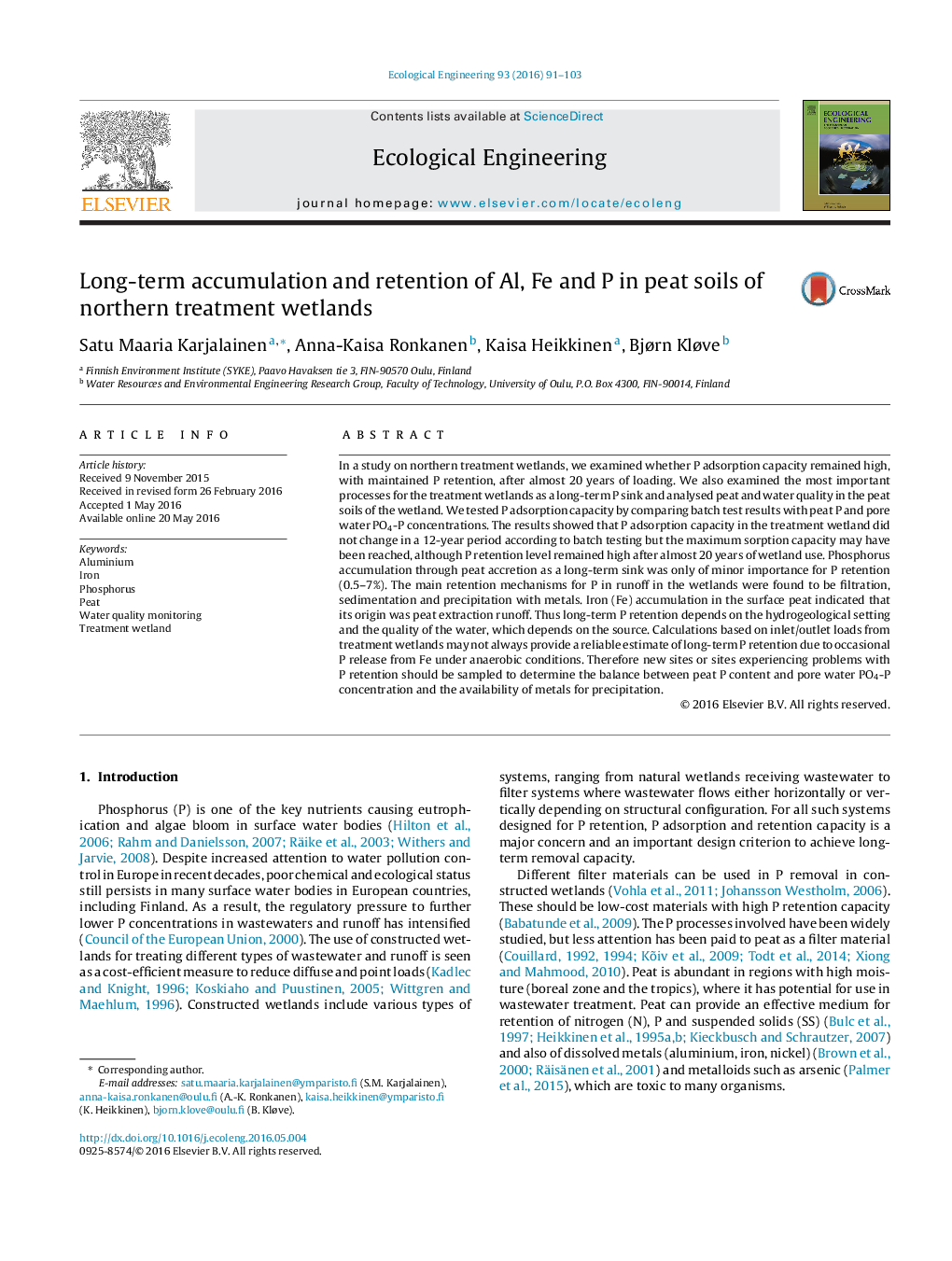| Article ID | Journal | Published Year | Pages | File Type |
|---|---|---|---|---|
| 4388717 | Ecological Engineering | 2016 | 13 Pages |
•Phosphorus retention remained high after almost 20 years of treatment wetland use.•Maximum sorption capacity may be observed from peat P and pore water PO4-P concentrations.•Annual P accumulation through peat accretion was 0.002–0.028 g P m−2 in northern treatment wetlands.•Precipitation of P is enhanced by runoff Fe originating from peat extraction.•Calculating P retention from inlet/outlet loads is not always an accurate estimate of the long-term P sink.
In a study on northern treatment wetlands, we examined whether P adsorption capacity remained high, with maintained P retention, after almost 20 years of loading. We also examined the most important processes for the treatment wetlands as a long-term P sink and analysed peat and water quality in the peat soils of the wetland. We tested P adsorption capacity by comparing batch test results with peat P and pore water PO4-P concentrations. The results showed that P adsorption capacity in the treatment wetland did not change in a 12-year period according to batch testing but the maximum sorption capacity may have been reached, although P retention level remained high after almost 20 years of wetland use. Phosphorus accumulation through peat accretion as a long-term sink was only of minor importance for P retention (0.5–7%). The main retention mechanisms for P in runoff in the wetlands were found to be filtration, sedimentation and precipitation with metals. Iron (Fe) accumulation in the surface peat indicated that its origin was peat extraction runoff. Thus long-term P retention depends on the hydrogeological setting and the quality of the water, which depends on the source. Calculations based on inlet/outlet loads from treatment wetlands may not always provide a reliable estimate of long-term P retention due to occasional P release from Fe under anaerobic conditions. Therefore new sites or sites experiencing problems with P retention should be sampled to determine the balance between peat P content and pore water PO4-P concentration and the availability of metals for precipitation.
